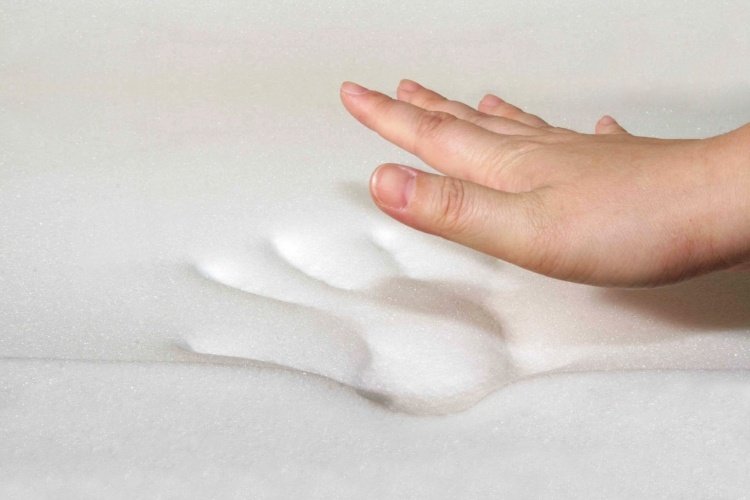Many products which seem to be very exciting at first sight also have a less attractive side which remains often undetected because manufacturers do not talk about it. So do also Memory-Foam mattresses which have been promoted strongly during many years (and still are) by one of the leading mattress producers and by many smaller manufacturers who tried to capture a part of that market. You might be familiar with the story about the NASA development and the tale about ultimate comfort which associates a weightless feeling, almost like flying. There is more to know if you want to recognize the full scope of this material which has its benefits without doubt, but, as said before, also its disadvantages.

MemoryFoam is chemically treated with the target to lose its resilience completely. The result is a foam that after being compressed is hardly "pushing back" and so it seems to memorize the shape of the object that has caused the said compression. This lack of resilience provides a feeling of total pressure relief which is perceived as very comfortable by many consumers at first sight. The disadvantages are very often recognized later at home.
Hence, what's the other unvisible side of this foam? There are two major issues with Memory-Foam which should be considered before taking a decision to buy it:
1) No resilience also means that your body is sinking into the foam without getting any counter-pressure - it's a bit like lying in a hole in the sand where you suddenly recognize that moving out from this comfortable mold that your body has shaped, is pretty challenging. It takes you much more effort to change your position on this foam compared to High Resilient Foam. This might not be a big problem for a young and agile person. But for those suffering from back problems or for eldery people who are not that flexible any longer, this restriction in physical mobility can be quite a burden. It is proven that the strength someone needs to change position on a Memory-Foam mattress is creating huge torsion pressure along the spine which is obviously not good for people with back problems.

2) The second point is that most Memory-Foams are very "closed" foams - their cells are closed and do not let air to pass through the foam. Low air-permeability results in bad ventilation. Good ventilation is important since it should dry humidity that is produced always when someone is lying under a blanket on the mattress - a human body is emitting up to 20 oz of moisture during eight hours of sleep. Excess moisture may cause hygienic problems and is nurtering dust-mite population. Fortunately some mattress producers provide today washable covers and anti-bacterial treatments which prevent from hygienic issues. Allergic people should make sure that they either buy a mattress with high ventilation properties or with a treatment that is protecting them from dust-mites.
Swiss Sleep System is offering mattresses with high resilient Swiss foams that provide full mobility on the bed and which achieve excellent ventilation values for good moisture management. Check out what bed is best for you and visit our BedFinder.
Start the journey to your new bed with our bedfinder